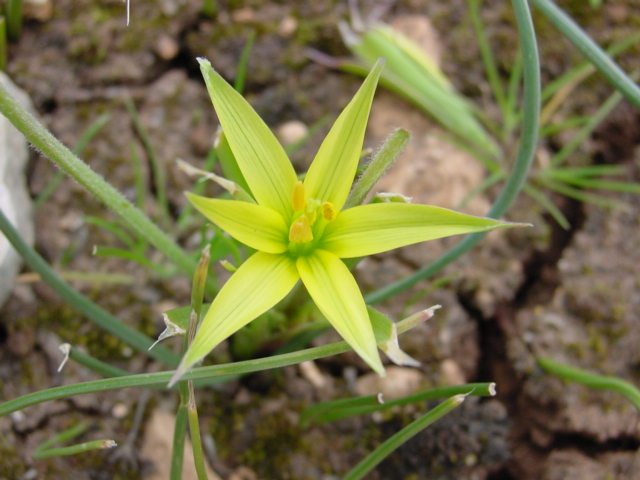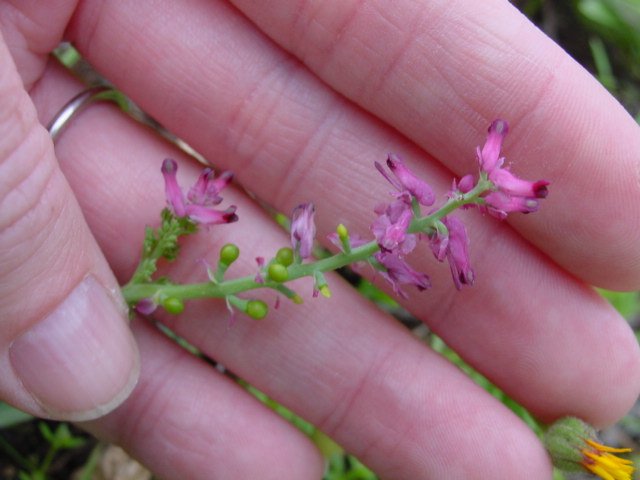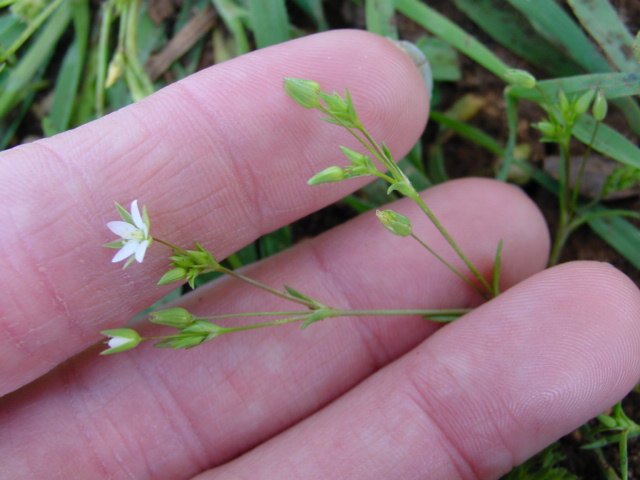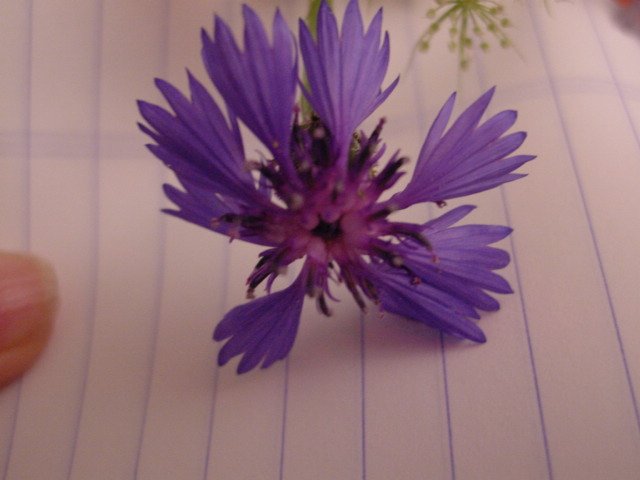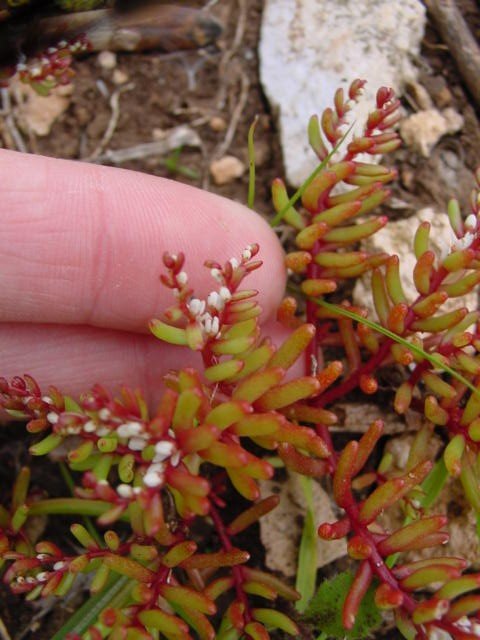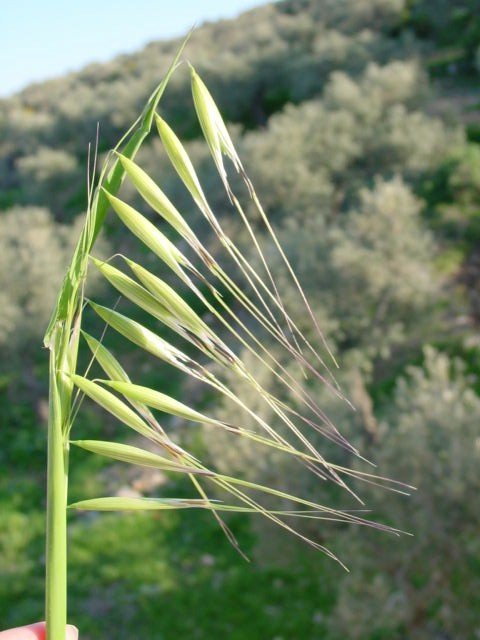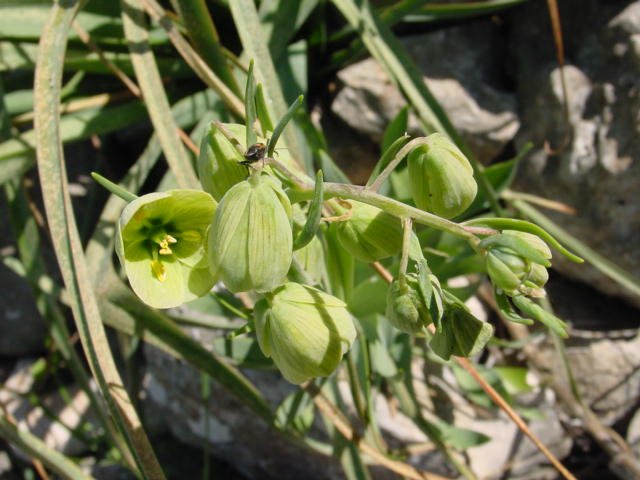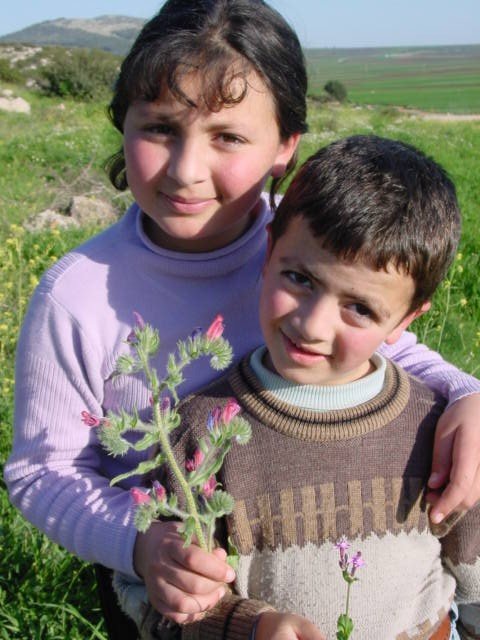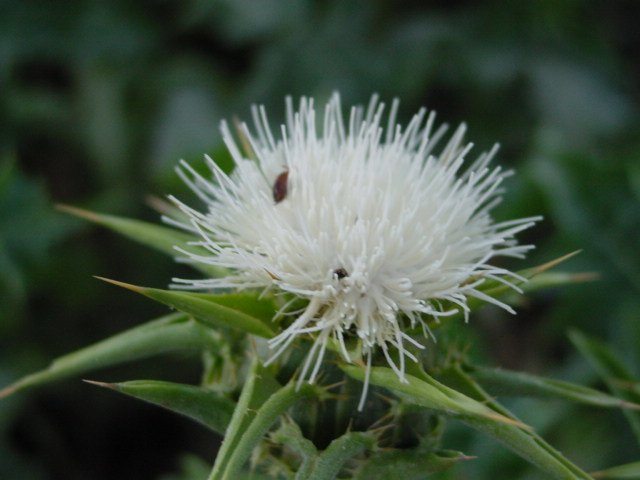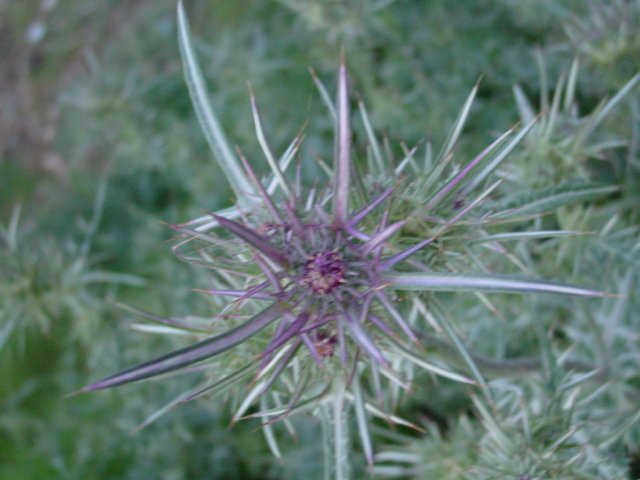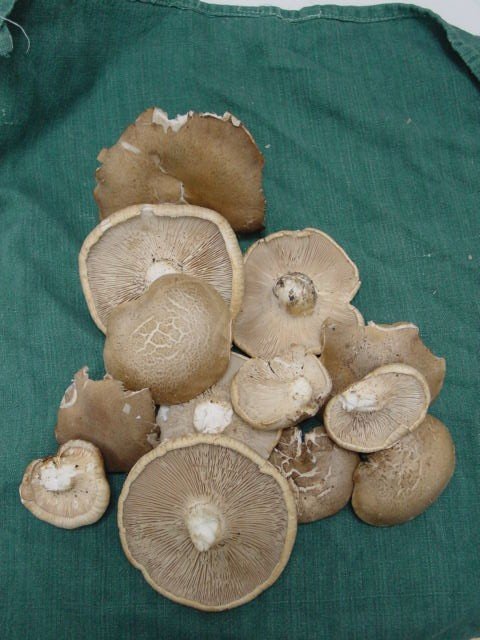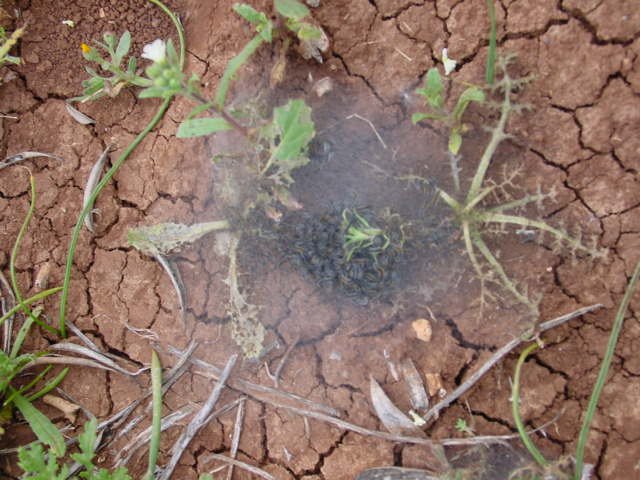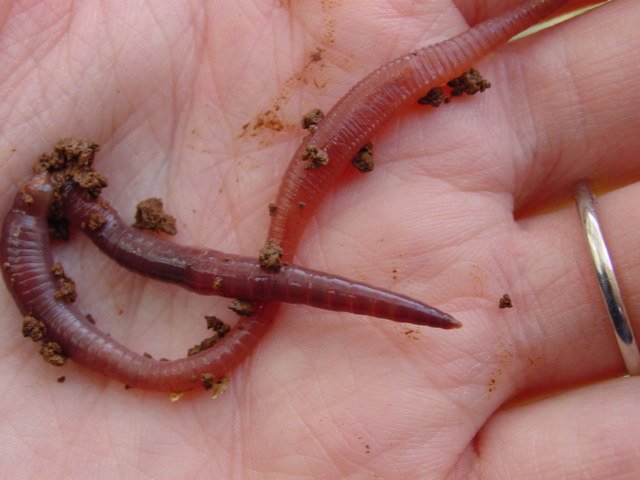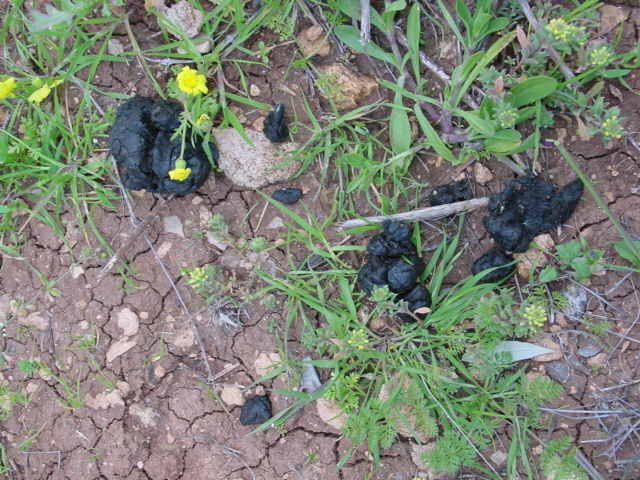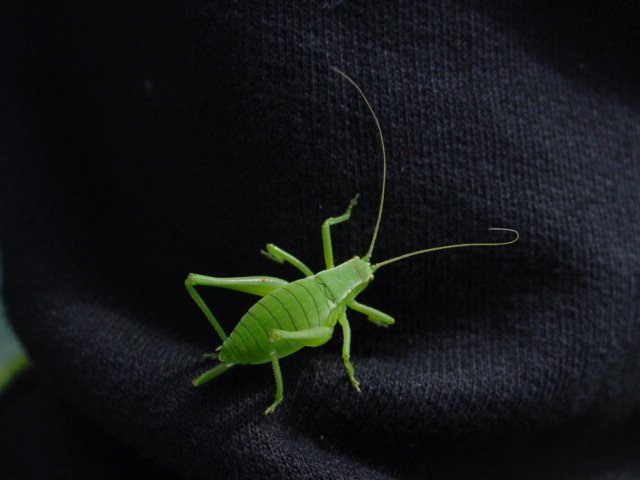Zababdeh Nature - February - March
February - March Flora
After a very windy day or two in early February, the ground was covered with almond flower petals. It looked like a sprinkling of snow on the green ground.
I missed this flower the first spring we were here; found it in February of 2001, growing in a niche of a rock. I have only seen two or three of them. They are gagea (Gagea commutata), perennial in the lily family. Elegant.
Ramping fumitory (Fumaria capreolata) is one of many small flowers blooming now that are worthy of a closer look. It's a creeping annual, growing in shady places.
Trefoil?
My book explicitly describes the wild pea (Pisum elatius) as pink and purple, not a rich salmon color. However, I propose that these, which I see crawling around everywhere in late February, are wild peas.
Tiny, tiny flowers.
The beautiful hills of Zababdeh.
Sure wish I knew.
Found by some of my 7th graders on their nature hike in February 2002, this appears to be an orchid. There are a number of orchids in Israel and Palestine, and most of them appear to be protected. This one did not seem to match up with any in my book, so I can't say which one it might be. But it sure is pretty. The smell is kind of earthy/green/springy. None of the kids or the other teachers liked the smell, and neither did Marthame. But I like it.
I think these flowers are from valerian, or corn salad (Valeriana dioscordis). I didn't dig up the roots to see if they have the distinctive, sort of sickly sweet valerian smell, which I recall distinctly from working at Bonne Sante Health Foods in Chicago. (Valerian root is often used to calm nerves and aid sleep.) The flowers vary from white to pink.
Tiny blue flower.
This lacy flower is called Venus' comb (Scandix pecten-veneris). It's in the carrot family and apparently its fruit-clumps resemble a comb. We'll have to wait to see that....
A common, even weedy plant, henbit (Lamium amplexicaule) offers a lovely treat for someone willing to take a closer look.
Unidentified growth.
This striking, small flower is called Syrian speedwell (Veronica syriaca). In early February, you see it everywhere under the olive trees.
In the mint family, musk dead nettle(Lamium moschatum) has interesting leaves with white patches in them. The flowers are tucked under the leaves.
I think this is field mustard, or charlock (Sinapis arvensis). It is blooming all over this place in February and March.
The summer adonis (Adonis aestivalis) is part of the crowfoot family.
Maybe a relative of oats (Avena genus?). My book is not so detailed for grasses.
The seventh graders we walked with told me that these are known as "crazy apples" because if you eat them, you go nuts. Perhaps they are from mandrake?
This is Persian fritillary (Fritillaria persica), a perennial in the lily family. According to my flower book, the flower stalks can reach up to one meter. It also says that Persian fritillaries are not common. I might know why....I noticed very few flowers, but many plants with the flower stalks removed, seemingly by hungry sheep.
Another view of the Persian fritillary.
Almonds can be eaten green; they're especially good with a little salt. They can also be eaten when they are a little harder and browner. And then, of course, in the ripe, nutty form we're used to.
Corn crowfoot (Ranunculus marginatus) grows especially in wet fields. The flowers are very glossy.
Another view of corn crowfoot.
There are many kinds of iris growing in the region. I don't know which one these are. They may be German iris (Iris mesopotamica), which Muslims often plant in graveyards, according to my flower guide.
These flowers are from the mustard family, maybe Pink mustard (Eucaria hispanica). The size of the plants apparently varies widely with the weather.
Another view of an iris.
A bunch of irises.
Another iris.
Lovely little cluster of tiny flowers.
I believe this is Naple's garlic (Allium neapolitanum).
I believe this bright bug is on spring groundsel (Senecio vernalis), a common flower in the daisy family.
More Naple’s garlic (I think).
I believe this is chamomile, or mayweed (Anthemis leucanthemifolia).
This friendly fellow stayed still long enough for a photo, tho' I didn't brew a cup of chomomile tea to find out who he was.
The star of Bethlehem (Ornithogalum montanum) is popping out all over the hills in March. There are a few varieties of this lily in the region.
Another collection of the star of Bethlehem.
I think these flowers are hairy flax (Linum pubescens). There must be really nice nectar inside, because not a moment went by that a flower wasn't visited by a fly or bee, often nestled all the way into the flower, with only hindparts showing. I saw (but couldn't photograph) one little fly with a pointy "nose," maybe aiding its nectar sipping skills.
Flowers of the Judean bugloss (Echium judaeum) change color as they bloom, from red to blue.
The Judean bugloss is known locally as "fish's mouth," because that's what the shape of the flower resembles.
Thistles are blooming everywhere. Many seem to be Holy milk thistles (Silybum maritimum).
Note the bees nestled in this thistle.
The white thistle was alone among the purples.
This is probably Syrian thistle (Notobasis syriaca).
February - March Fungi
Shortly after we were impressed by the size of our friend's mushroom, our shepherd friend brought us a bunch of delicious fresh mushrooms from the hills. We're told there are poisonous mushrooms here; beware of mushrooms that are dark underneath. These, however, were delicious sauteed with butter and garlic.
The full mushroom collection.
February - March Fauna
I'd never seen bagworms on the ground before.
I always thought that the white snail shells that are everywhere were old brown shells, bleached white in the sun. However, one of my seventh grade students found these on our class picnic. Three very alive white snails.
A few folks near Zababdeh have horses.
It was exciting and in a way reassuring to find good ol' earthworms here.
The hills are full of these shells, but not quite as full of the live ones.
More bagworms.
Nice to see a familiar friendly ladybug.
On a walk with the seventh graders, the boys eagerly turned over rocks to find critters for me to photograph. Sure enough, we found a scorpion. This one was a lot lighter in color than the one that visited us in the fall. They mushed it after I took a picture. I felt pretty bad for the poor thing, but I couldn't really tell the kids no. They already thought I was a little nuts for telling them not to kill critters that aren't dangerous.
On a walk in early February, we spotted this dead sheep on the side of the road.
Scat!
On one of our walks, we found this snake, flattened and dried by the roadside. It was over six feet long. I think people wondered why on earth I would carry it home.
Grasshoppers!
Grasshoppers!
Grasshoppers!
A live snail! On the morning of March 25, I found this little fellow on some laundry outside drying on the line.
These flying dragons really like our apartment.
But flying dragons also cruise (and mate in) the natural world.
A beautiful turtle!
This one was just moseying along in front of me.
I was taking a picture of a flower during the teachers' picnic. I glanced down and saw the most amazingly bright red beetle wandering around on a leaf.
The red is piercing, even in the shade!
These arthropods are called "Moses sticks." Presumably like Moses's staff, which became a snake when he threw it to the ground. This picture is looking down into a small cave/old well. In the bottom left of the picture is something, I think a reptile or amphibian--but it moved away before I got a better look.
These arthropods are called "Moses sticks." When you touch them, they roll up, like this one.
Neat spiders are about in the spring. This one seemed to be guarding a big egg sac under a rock.
Neat spiders are about in the spring. This one is nice and striped.
Neat spiders are about in the spring. This one had seriously long legs.


